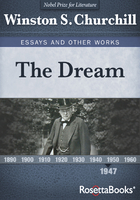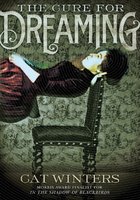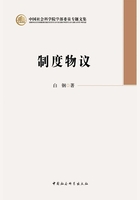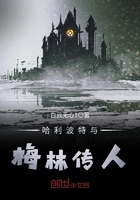Together with Molloy, How It Is counts for many as Samuel Beckett's truest accomplishment in the novel form. It is also his most difficult fiction, from a stylistic point of view and for the extremity of its vision. It furthers by radical means but also recapitulates the themes of reduced circumstance and the search for self that are the focus of the earlier novels (Molloy, Malone Dies and The Unnamable). At a late stage in the composition, Beckett toyed briefly with making the continuities explicit, writing an insertion in the margin of the typescript[1] that linked the narrator of How It Is to Molloy and Malone (and by extension to the multi-named narrator of The Unnamable).
After his mother's death in 1950, the inheritance Beckett shared with his brother Frank enabled him to purchase a plot of land and build a modest house near the village of Ussy-sur-Marne, sixty kilometres away from the bustle of Paris. As his fame grew, after Waiting for Godot, he came to depend more and more on this country retreat, far from admirers and callers. It was at Ussy that, in December 1958, he began to compose How It Is in French.[2] Besides writing, he also gardened and with Frank's help planted many different species of trees. His correspondence from this period contains several references to an ongoing battle with the moles that infested the property and tore up his plant beds.
The earliest versions of How It Is contain references to moles, and to callers, and to a scribbler relaxing at his cottage in the country.[3] But although Beckett often began with images from his own experience, he would later remove autobiographical details and dismantle chronological and causal relationships, replacing them with abstract forms that have a coherence of their own.[4] Thus the first version of the French text includes lengthy passages explaining the total darkness in which the narrator lives, and invoking the all-too-trivial moles who manage to be punctual in their comings and goings without benefit of alternating day and night.[5] After several drafts, Beckett simply asserts the existence of 'impenetrable dark'. Again, after a review of the various types of callers he has known in past lives, the narrator's solitude is initially explained by a thorough examination of circumstance and probability.[6] Beckett then cancels the passage and summarises in a few words: 'long wrangle so minute that moments when yes to be feared', then simply affirms 'no callers this time'.
Likewise, the narrator's continued survival seems at first to require some explanation grounded in realism. The contents of the all-important sack satisfy the need for food; Beckett then finds an analogous explanation of his means of satisfying thirst, before settling for a brief refusal to explain: 'mouth opens the tongue comes out lolls in the mud and no question of thirst either'. It's as simple as that. We have a character alone, in constant darkness, able to subsist. Which is all that is needed for the narration to proceed and, in the end, is all we are given. This is How It Is. Realism, causality and explanation are written out of the text. The narrator crawls through mud and darkness without knowing where he comes from or where he is going, and certainly not why. He drags with him a sack containing tins of food, the origin of which is a mystery to him. On his journey he meets another whom he calls Pim and with whom he has a brief, abusive relationship. In How It Is, Beckett continues to strip away conventional forms, as if to adumbrate the 'peeling the onion' metaphor ventured in his earlier critical book on Proust.
Congruently, from version to version, the work metamorphoses into a mosaic of broken phrases scattered and reassembled into three sections of equal length, whose motifs (solitude, company, solitude) assert an aesthetic rather than narrative symmetry. As with the last pages of The Unnamable and the thirteen short Texts for Nothing (1967), early drafts of the novel string together lengthy sentences made up of short, independent phrases punctuated by commas. Beckett worked in French, as with the trilogy and Texts for nothing, all of which he subsequently rendered into English. Unlike Molloy, Malone Dies and The Unnamable, which were written at speed, he struggled with several versions of How It Is. He complains in his correspondence of how 'horribly difficult' the writing process is. Though he seems to have known that it would be a full-length work, the first drafts are only a few pages long, as if he is uncertain of how to proceed.
After the fourth complete prose version of the novel, Beckett suddenly decided to change radically the layout of the text, in order to foreground the broken rhythms. Revising his most recent typescript, he inserted forward slashes throughout, at points where he decided to sub-divide or fragment the prose. Rather than units of meaning, these fragments re-configure the narrative as units of breath. Occasionally the narrator stops to ponder what he is saying, but mostly he pauses only to take breath before continuing. The fragments themselves do not necessarily constitute wholes, or correspond to any perceptible semantic organisation. In some cases, a theme, or even a phrase straddles two fragments. In others, a single fragment yokes wildly disparate subject-matter.
Just as he was engaged in experimenting with his text, Beckett was invited by his American publisher, Barney Rosset, to submit something for Evergreen Review, the house magazine of Grove Press. He naturally turned to work in progress, or rather to producing an English version of it, no doubt sensing an opportunity to try out the new form so peculiar to How It Is. The excerpt – an early version of the opening pages of the novel – appeared in the September 1960 issue under the title From an Unabandoned Work, alluding to the title of an earlier story which he had published in Evergreen Review.[7] On returning to the text in French, Beckett knew that he had found the form he needed: one devoid of punctuation and making scant use of the sentence to build a sustained narrative. Although it was to become a commonplace to say that Beckett wrote without punctuation and with minimal syntax, this is in fact his only unpunctuated text (if we except the punctuating role of the spaces between fragments). Even the short prose works that followed in the 1960s have an upper case letter at the beginning and a final stop at the end, and many are punctuated throughout with commas.
Beckett took pains with the published text to clarify for readers the integrity of the individual units. For the French original (Comment c'est, éditions de Minuit, 1961), he instructed that each page end either with an incomplete line (making clear that the fragment was ending) or with a hyphen (making clear that the fragment continues over-page). For the English edition (New York: Grove Press; London: Calder and Boyars; both 1964) he eschewed altogether the page-breaking of fragments, preferring to vary the amount of space between fragments so as to avoid any overflow onto the next page – while still requiring that the last line of each page be incomplete. In his unbound copy of the Calder and Boyars edition, Beckett makes a change in wording at one point in order to shorten the final line of a page.
Stylistically, How It Is mostly comprises short word-groups which rarely extend to sentences. The narrator's monologue is made up of false starts, of self-corrections, interruptions and repetition. There is a relative scarcity of grammatical linkages (prepositions, conjunctions, relative pronouns); rather, meaning is created through juxtaposition. In such a stylistically stringent environment, repetition is a crucial organisational as well as expressive resource. Word-groups become familiar as units of meaning thanks to frequent repetition. These brief phrases are scattered about the text, inserted in the midst of other phrases, punctuating and dividing them into shorter units, parsing the narrative. Besides the repetition of words, there is also repetition of sense through synonymy, as the narrator searches for the correct word amid repeated false starts. Such insertions, interruptions and corrections reinforce the curtailed rhythms. The result is unsuspectingly close to everyday, informal speech, and many commentators have pointed out how much How It Is benefits from reading aloud.
By way of example, the word-string 'voice once without quaqua on all sides then in me when the panting stops'. This sequence cannot immediately be parsed as grammatical prose. Lacking the familiar guides of punctuation, capitalisation and prepositional linkage, we must slow our reading and look at each word. We might at first read 'voice once without quaqua' but then we encounter 'voice once without' repeated again and realise that it is a unit, that without is an adverb, the opposite of within ('in me') and that quaqua belongs to the next unit, 'quaqua on all sides', which repeats and clarifies 'voice once without'. The rhythm of the text begins to insinuate itself. A voice is talking non-stop, yet uncertain of what needs to be said, repeating itself, pausing only to take in air. Throughout the text, the combinatory force of these elements creates new meanings.
On publication, critics were perplexed equally by the form and by the starkly symbolic content. Since the novel was clearly not written in prose sentences, many assumed that it was not a novel but a poem of sorts. Nor was it obviously in verse, however, and some French critics used the term versets (referring to a biblical verse or versicle) to describe the units. On the one hand, it was assumed that where there were no sentences there could be no novel, thereby identifying a genre with a medium (overlooking novels in verse). On the other hand, this logic assumes only two forms of discourse, prose and verse, whereas How It Is exploits a third: namely speech. It is customary for Beckett's works to produce in the reader or spectator an experience similar to that being lived through and articulated by the narrator or speaker. Reading How It Is aloud brings the reader in close to the narrator's own bewilderment at this seemingly disjointed monologue originating from elsewhere, at the same time as making the syntax audible, the sense apparent, the text intelligible. Baffling at first, the unpunctuated sequence of words organises itself into an unfolding and coherent network of cross-reference.
On its French publication in early 1961, Maurice Nadeau published an enthusiastic review in L'Express (26 January). A long-time supporter of Beckett, Nadeau had been closely involved in the first Paris production of En attendant Godot and was to be influential in securing the Nobel Prize for Beckett in 1969. He begins his review by expressing surprise at the further reduction of circumstance in the novelist's fictional world, having regarded The Unnamable as reaching the limit in this regard. He offers a lucid interpretation of the novel as allegory and notes that it contains 'visions of incredible precision'. The novelist Claude Mauriac took an opposite stance (Figaro, 1 February). Though the work contains flashes of beauty, it is for the most part unreadable, not for its unpunctuated form or morbid content (by then familiar ground), but because Beckett's words negate not only themselves but ourselves: they efface us from the world. Subsequent reviews by the Paris cognoscenti reflected this polarity, frequently within the same review. Guy Dumur (France Observateur, 16 February 1961) speaks of a style that is beautiful despite its contempt for style, and of the intimidating applications of Beckett's impressive talents. R.-M. Albérès (Nouvelles littéraires, 2 March 1961) likens Comment c'est to the Book of Job and to the works of Pascal for the lyricism of its despair, but wonders if the novel breaks new ground or is a mere imitation of Kafka crossed with the poetic prose of Lautréamont. Charles Camproux's long review (Lettres fran?aises, 11 May 1961) contrasts the apparent incoherence of the novel's form and the profound coherence of its vision.
The English-language press also took note of the French Comment c'est. Writing in the French Review (May 1961), Raymond Federman shares the general amazement at the further foreshortening of circumstance in Beckett's fictional world, and echoes the contradiction between its 'nihilism' and its audacious artistry. The Times Literary Supplement (7 April 1961) was generally receptive: Beckett's 'range is limited; it is a vertical range through the layers of human consciousness rather than a horizontal extension through those forms of behaviour and experience […]. But it is entirely his own territory and he has explored it with great skill and thoroughness. As for the despair: Comment c'est may not be a great novel but it is a work which makes most postwar novels look trivial.'
When Beckett's English version appeared,, three years later, V. S. Pritchett began his review in the New Statesman (1 May 1964) with a parody of the novel's style, and went on to suggest that Beckett's writing had paid 'a heavy price in obscurity, pretentiousness and awful boredom'. He notes nonetheless that there are 'lyrical glints' in the text and ends by drawing a not-unflattering parallel with Shaw and the tradition of Irish farce. The Times Literary Supplement's review of How It Is (21 May 1964) offers an objective summary of the novel's progress, ending with the usual contrast between pessimism of content and 'poetic energy' of rendering.
How It Is presents themes familiar to Beckett's readers but pushed to an extreme that some early reviewers found off-putting. This may account for the fact that the novel has drawn less critical response than many of Beckett's other works. It has been read as an allegory of earthly existence or of the writing process as such, as the description of a Purgatorio-like afterlife, or as an investigation into the nature of God as by turns a purveyor of victuals and a disengaged witness. What seems clear is that How It Is brings the progression of novels from Murphy onwards to a terminus of sorts, and at the same time inaugurates the series of abstract prose works of the 1960s and beyond. The Lost Ones (1972) presents a new configuration of the processional community with fixed roles, already emergent in part three of How It Is (and anticipated in Watt). Some of the Fizzles (1976) re-trace the solitary wanderings of part one of How It Is. A text like Enough (1974) recasts the motif of company, and the story entitled Company (1980) employs, in a more meditative key, the motif of words arriving from elsewhere ('A voice comes to one in the dark. Imagine.') first broached in part two of How It Is. And the creation of narrative through juxtaposition and reduced syntactic resources is the very stuff of such shorts as Ping (1974), Lessness (1970) and For to End Yet Again (1976).
Shortly after its completion, Comment c'est was translated by Beckett. The English follows closely the French original. Though the differences between the two are numerous, they rarely involve phrases of any length. In a very few cases, the creative process appears to be continuing into English, where Beckett inserts a word group (such as 'the sack we're talking of the sack') to clarify sense. But generally the changes from French to English involve brief phrases and almost as many deletions as additions (there is a net tendency to add). Beckett makes local adjustments to rhythm in order to preserve the overall identity of the work – its repetitive principle, the brevity of its sense units – allowing the rhythm to be naturalised within the new environment of English. The overall effect of specific changes, either on the prose rhythms or on our perception of the fictional world, is almost negligible. Comment c'est and How It Is are in fact very close.
Likewise, the British and American editions of How It Is, which appeared in quick succession in April 1964 (Calder and Boyars, Grove Press) differ in only a dozen or so places. The variants are minor and fall into two categories. In some cases, Beckett appears to accommodate differences in British and American usage by replacing an existing phrase with a synonym more likely to be familiar to an American reader (compare 'what are the hands at' and 'what are the hands up to'). In these cases, the present edition favours the Calder and Boyars text. In a very few instances, Beckett appears to have continued revising the Grove text, introducing a phrase (never deleting) where there was none in Calder and Boyars. Again, such additions serve to clarify content, and they modify only slightly the local rhythm of the fragment. In these cases, this edition favours the Grove Press reading.
Notes
[1] Samuel Beckett, Comment c'est, How It Is and L'image: A Critical-Genetic Edition, ed. édouard Magessa O'Reilly (London: Routledge, 2001, p. 301).
[2] James Knowlson, Damned to Fame, The Life of Samuel Beckett (London: Bloomsbury, 1996).
[3] Comment c'est, How It Is and L'image (op. cit., p. 314).
[4] A development explored in S.E. Gontarski, The Intent of Undoing in Samuel Beckett's Dramatic Texts (Bloomington, Indiana U.P., 1985).
[5] Comment c'est, How It Is and L'image (op. cit., p. 234).
[6] Comment c'est, How It Is and L'image (op. cit., pp. 251-261).
[7] Three translated excerpts of work-in-progress appeared in print, prior to the novel's volume-publication in English: 'From an Unabandoned Work' (Evergreen Review, September 1960), 'From How It Is' (Paris Review, Summer-Fall 1962) and 'Conclusion of How It Is' (Transatlantic Review, Summer 1963). These excerpts contain minor variants.















